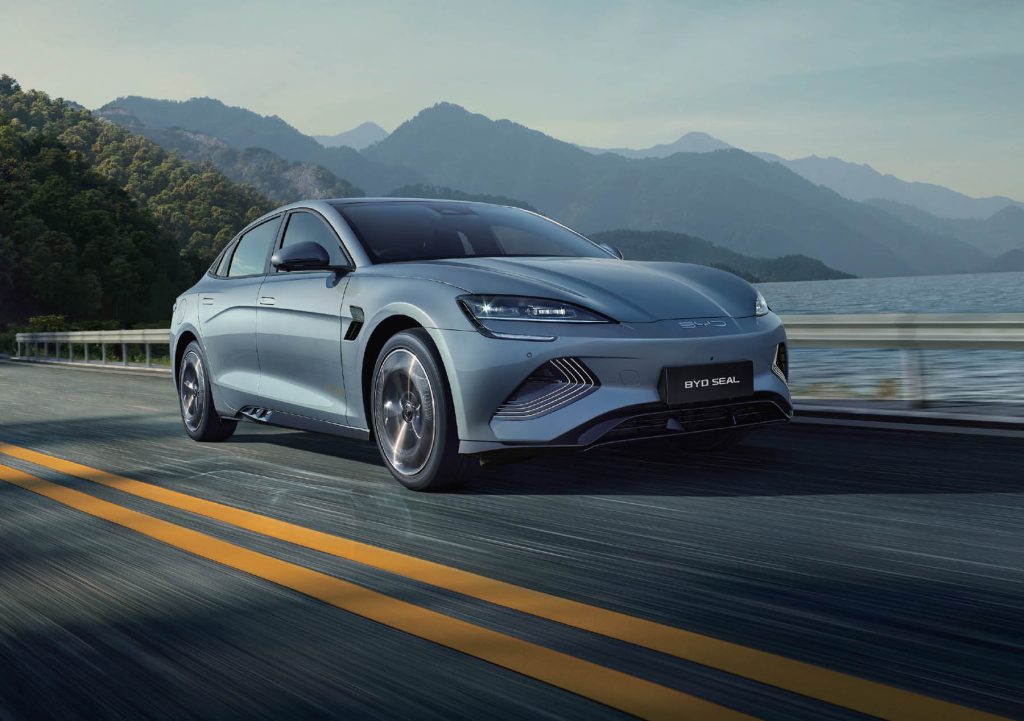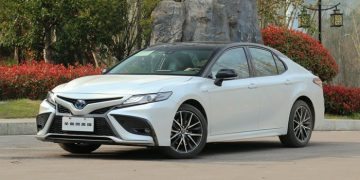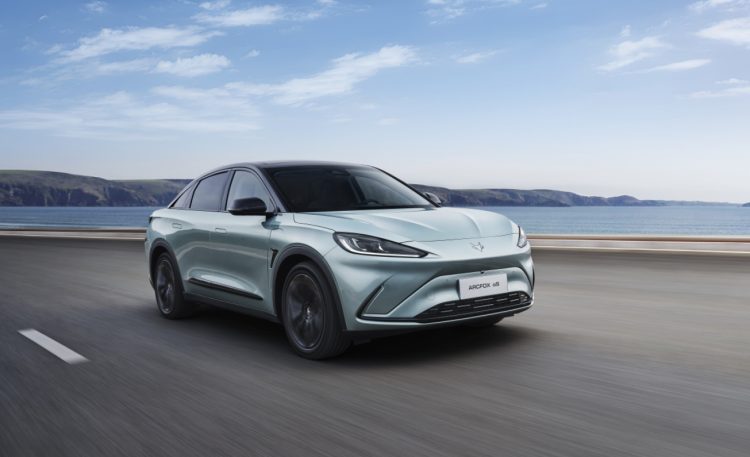Introduction: The Rise of Electric Vehicles and Their Impact on the Traditional Automotive Supply Chain
In recent years, electric vehicles (EVs) have become a significant force in reshaping the global automotive industry. As concerns about climate change, air pollution, and the environmental impact of fossil fuels grow, governments and consumers alike are increasingly turning to electric vehicles as an alternative to traditional internal combustion engine (ICE) vehicles. This shift in consumer preference, coupled with strong government incentives and regulations, has led to a rapid acceleration in the production and adoption of electric vehicles across the world.
However, the rise of electric vehicles is not just a revolution in automotive technology; it is also reshaping the entire automotive supply chain. Traditional automotive manufacturers, who have long relied on fossil-fuel-powered vehicles, now face a range of challenges and opportunities as they transition to EV production. The supply chain that once supported internal combustion engine vehicles, with their complex systems of parts and components, must now adapt to the unique requirements of electric vehicle manufacturing. From battery production to electric powertrains, the changes required in the supply chain are profound and far-reaching.
This article explores the key changes in the traditional automotive supply chain brought about by the production of electric vehicles. We will examine the impact on suppliers, shifts in manufacturing processes, and the emergence of new players in the market, highlighting the complexities and opportunities for companies operating within this evolving supply ecosystem.
Section 1: The Shift from Internal Combustion Engines (ICE) to Electric Powertrains
1.1 Simplification of the Powertrain
One of the most significant differences between electric vehicles and traditional gasoline or diesel-powered cars is the electric powertrain. Internal combustion engines (ICE) are complex systems that require hundreds of components, including pistons, valves, crankshafts, and transmissions, which have historically driven much of the supply chain in the automotive industry.
In contrast, the electric powertrain is simpler and consists of fewer components. The key elements of an electric powertrain include:
- Battery: The heart of the electric vehicle, responsible for storing and delivering energy to the electric motor.
- Electric Motor: Converts electrical energy from the battery into mechanical energy to move the vehicle.
- Inverter: Converts the direct current (DC) from the battery into alternating current (AC) to power the motor.
- Power Electronics: Manage the flow of electricity between the motor, battery, and other systems.
This simplification means that certain suppliers who have traditionally supplied parts for ICE vehicles are seeing reduced demand, while others are benefiting from the need for new parts related to electric powertrains. This shift is also reducing the number of parts required to assemble a vehicle, making the supply chain less complex in some ways but also requiring new suppliers and materials.
1.2 Reduced Demand for Traditional Components
As the demand for electric vehicles increases, traditional components required for ICE vehicles, such as engines, transmissions, and fuel tanks, will experience reduced demand. This poses a challenge for suppliers in the traditional automotive supply chain, as they will need to pivot towards providing components for electric powertrains and other electric vehicle technologies.
For example, transmission manufacturers may see a decline in demand, as electric motors generally do not require the complex transmission systems found in gasoline vehicles. Additionally, components such as exhaust systems and fuel injectors, which were once critical to ICE vehicles, are becoming obsolete in EVs.
On the other hand, suppliers of electric powertrains, batteries, and related technologies are seeing a surge in demand. Battery manufacturers are now among the most critical suppliers in the automotive supply chain, with major automakers competing to secure long-term supply contracts for the essential raw materials needed for batteries.
Section 2: The Impact on Battery Production and Supply Chain Dynamics
2.1 Battery Production: A Central Pillar of EV Supply Chains
The battery is arguably the most critical component of electric vehicles, and its production has become a central pillar of the electric vehicle supply chain. The transition to EVs has created an enormous demand for lithium-ion batteries, which are used in most electric vehicles today.
- Raw Materials and Mining: The production of batteries requires significant quantities of lithium, cobalt, nickel, and other rare-earth materials. These raw materials are often sourced from countries with rich mineral deposits, creating new dynamics in the global supply chain. Supply chain risks related to mining, such as geopolitical instability or fluctuations in commodity prices, can have significant impacts on battery production.
- Battery Gigafactories: To meet the growing demand for EV batteries, automakers and specialized battery manufacturers are building large-scale gigafactories dedicated to the production of batteries. Companies such as Tesla, LG Chem, and Panasonic are investing billions of dollars into these facilities, which are designed to significantly increase battery production capacity.
- Vertical Integration: To secure a stable supply of batteries, some automakers are pursuing vertical integration strategies, where they take greater control over the battery supply chain by producing their own batteries or partnering with battery manufacturers. This move allows companies like Tesla and BYD to reduce dependency on third-party suppliers and mitigate the risks of battery shortages or price volatility.
2.2 Challenges in the Battery Supply Chain
The growing demand for electric vehicles has led to significant challenges in securing a stable supply of raw materials for batteries. These include:
- Geopolitical Risk: Countries that control large supplies of essential raw materials, such as Chile (lithium) or the Democratic Republic of Congo (cobalt), can exert considerable influence on global supply chains. As a result, automakers are looking for ways to diversify their supply sources and reduce dependency on a few key regions.
- Recycling and Sustainability: Battery recycling is an emerging issue in the electric vehicle supply chain. As the number of electric vehicles on the road increases, the need for efficient recycling processes to recover valuable materials like lithium and cobalt becomes more critical. Many automakers are investing in research and partnerships to develop sustainable methods for battery recycling.
- Cost Reduction: Battery costs are a significant portion of the overall cost of electric vehicles, and reducing these costs is critical for making EVs more affordable. Technological advancements in solid-state batteries and battery chemistries aim to improve energy density and reduce manufacturing costs.

Section 3: New Players and Shifting Supplier Roles
3.1 The Emergence of New Suppliers
The rise of electric vehicles has introduced new players to the automotive supply chain, many of whom specialize in technologies that are essential to electric vehicles, such as batteries, electric motors, power electronics, and charging infrastructure.
- Battery Manufacturers: As mentioned earlier, battery manufacturers have become increasingly important in the automotive supply chain. Tesla’s Gigafactories are a prime example of how automakers are taking control of battery production. Traditional car manufacturers are also entering the battery production market or forming partnerships with leading battery suppliers to secure long-term access to batteries.
- Charging Infrastructure Providers: As the adoption of electric vehicles grows, the need for charging infrastructure has risen significantly. Companies specializing in electric vehicle charging, such as ChargePoint, EVgo, and Shell, have become crucial parts of the supply chain. These companies are investing in expanding fast-charging networks and home charging solutions, ensuring that electric vehicles can be conveniently charged at home and on the go.
3.2 Impact on Traditional Suppliers
Traditional automotive suppliers, who have historically supplied components for internal combustion engine vehicles, face a challenging transition. As demand for components like engine parts and transmissions declines, many suppliers must pivot towards providing parts and technologies for electric vehicles. This has led to the rise of new specialized suppliers who focus on technologies such as electric motors, battery management systems, power electronics, and thermal management systems.
For instance, BorgWarner, traditionally known for its internal combustion engine parts, has shifted focus toward supplying electric drivetrains and battery cooling systems for electric vehicles. Similarly, ZF and Bosch are investing in electric mobility technologies and adapting their production lines to meet the new demand.
Section 4: The Role of Automation and Smart Manufacturing
4.1 Embracing Smart Manufacturing
Electric vehicle production is increasingly being driven by smart manufacturing technologies. With the need for precise and high-quality components such as battery cells and electric motors, automakers are leveraging automation and AI-driven technologies to enhance manufacturing efficiency and quality control.
- Advanced Robotics: Robotics is playing a central role in EV production, particularly in the assembly of batteries and powertrains. These robots can handle the complex, high-precision tasks required to build EVs, such as battery assembly, wiring, and motor installation.
- Data-Driven Decision Making: The integration of IoT (Internet of Things) and AI allows manufacturers to track every aspect of the production process, from raw material sourcing to final vehicle assembly. This data-driven approach improves efficiency, reduces waste, and ensures that quality standards are met.
4.2 Reducing Production Costs
Automation and the adoption of lean manufacturing principles can help reduce production costs in the EV supply chain. With economies of scale, as more EVs are produced, unit costs can be driven down, making electric vehicles more affordable for consumers. Additionally, as technology improves, components such as batteries will become cheaper, further reducing overall production costs.
Conclusion: A Transformative Shift in the Automotive Supply Chain
The transition from internal combustion engine vehicles to electric vehicles represents a transformative shift in the global automotive supply chain. This shift affects not only traditional suppliers but also creates new opportunities for innovative companies specializing in batteries, electric powertrains, charging infrastructure, and smart manufacturing technologies.
While the production of electric vehicles simplifies some aspects of the supply chain, it also introduces new complexities related to battery production, raw material sourcing, and charging infrastructure. As the automotive industry continues to evolve, companies that can adapt to these changes and build resilient, sustainable supply chains will be well-positioned to thrive in the growing electric vehicle market.
The future of the automotive supply chain will be shaped by innovation, collaboration, and a shared commitment to sustainability as the world shifts toward a greener, more electrified transportation system.











































